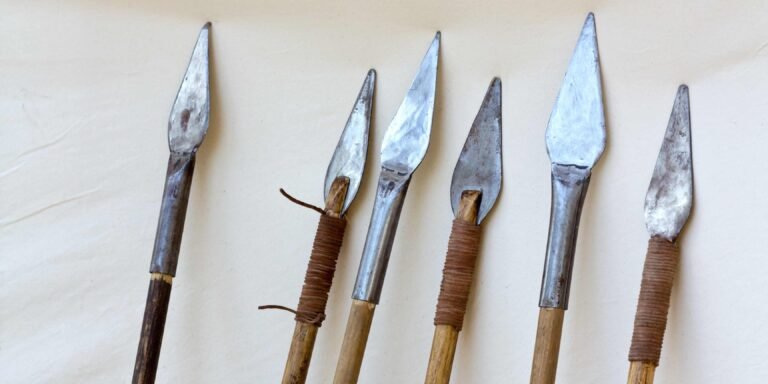Best Laundry Alternatives Without Electricity
This post may contain affiliate links, full disclosure here.
If you live off the grid, your electricity supply is likely limited, making using an electric washing machine to do your laundry impractical. There are several alternatives you can use, and the majority of them only require manual operation to function.
The following are the best methods for doing off-grid laundry:
- washboard method
- plunger method
- using hand-cranked washing machines
- hand washing
- brush method
These are tried-and-true methods that were used before the advent of modern electric washing machines.
Best Non-Electric Washing Methods
Hand Washing
Hand washing is a gentle method of cleaning delicate garments such as wool and underwear. You will only need a basin, water, and detergent for this method.
Fill the basin halfway with warm or lukewarm water. Check to see if there are any visible stains on the clothes that will not be removed by soaking alone. To avoid damaging the delicate garment, treat these stains with liquid detergent or commercial stain removers using your fingers rather than a scrubber.
Add the detergent to the water, then gently swish the mixture to dissolve the detergent completely. Soak your clothes in it and gently press them down to the basin to ensure that they are completely submerged. Allow them to soak for at least 20 minutes, or until the stains are gone.
When you’ve removed all of the dirt, rinse your clothes by gently squeezing them to remove excess water. Finally, lay them flat on a sun-dried surface or hang them until completely dry.
You can also hand wash regular or non-delicate clothing. However, instead of soaking them to remove the stain, you can scrub them with your hands. Rinse them after scrubbing to remove any excess detergent. Then twist and squeeze the water out to shorten the drying time.
Basin and Brush
This method is useful if you want to remove stubborn dirt from specific areas of your clothing. All you need is a basin and a brush, as well as detergent and water. However, not all types of brushes are appropriate for use. To avoid causing damage to your clothes, use a scrub brush with soft bristles.
Fill the plastic basin with water until it is about two-thirds full. Add the detergent and agitate the water to thoroughly dissolve it. Immerse the clothes in the mixture and soak them for 10 minutes or longer, depending on how dirty they are.
After enough time has passed, take your scrub brush and begin scrubbing the soiled areas of the clothes while still submerged in water. To avoid abrasions on the fabric, avoid scrubbing too hard.
When you’re finished cleaning the clothes, rinse them in a separate bucket of clean water. Squeeze them to get rid of excess water and shorten the drying time.
This method is relatively simple to implement, but it has a few minor drawbacks. This method requires you to be in a hunched position to reach the brush and do the scrubbing, which may be bad for your back and posture. This method is also a little messy because you’ll be moving your hands all the time while they’re submerged in water.
Washboard
Using a washboard is a time-honored and efficient method of washing clothes without the use of electricity. The washboard is constructed from a wood case and a corrugated metal plate. It works in the same way that the brush and basin method does.
There are two methods for washing clothes with a washboard, which only differ in how the soap or detergent is applied. The first method involves filling a bucket with soapy water and repeatedly dipping the clothes in it. The second method is to directly apply the soap to the washboard. Both methods are effective, though the former uses less detergent and uses less water.
In order to wash the clothes, you must “scrub” them against the surface of the washboard by moving them up and down. Scrub until the stains have been completely removed. After that, rinse the clothes in a separate bucket of clean water, squeeze out the excess water, and hang to dry.
If you live off the grid, there is a good chance that there is a river nearby. Bring your washboard to the shallow section of the river. Use the second method of using a washboard to wash your clothes. You can save your valuable water supply and use it for other purposes this way.
Bucket and Plunger
The plunger method is the most common non-electric washing machine alternative. It functions by simulating the mechanism of a real washing machine using manual mechanical work. It is a simple and inexpensive method that does the job well.
You’ll need a clean toilet plunger and a bucket, preferably one with a lid, to use this method. Drill a hole in the lid large enough to accommodate the plunger’s handle. Fill the bucket about three-quarters of the way with water. Place your laundry inside after you’ve added the detergent.
Cover the bucket with the plunger handle protruding. To avoid splashing and making the floor wet and slippery, make sure it won’t come off easily. Now, agitate the contents of the bucket by pushing down and pulling up on the plunger, simulating the action of a traditional washing machine.
Continue vigorously plunging for about 10 minutes, or until the clothes are clean enough. Remove the clothes and rinse them in a bucket of clean water.
Instead of a toilet plunger, you can purchase a plunger designed specifically for this purpose. Although it is more expensive, it produces more agitation while requiring less force to be applied. It also has a shovel-style handle for a better grip.
Although this method is very effective, it may be inefficient for a large household. Because the amount of laundry is relatively small, it is best suited for a single person or a couple. It can still be used in households with more than three people, but you must do your laundry in batches.
Hand Cranked Washing Machines
Hand-cranked washing machines work similarly to plunger washing machines in that manual mechanical work is converted to an agitation mechanism that is responsible for “washing” your clothes. The Wonder Wash and Avalon Bay Eco Wash are two of the most popular brands.
They have a capacity of only about 5lbs of laundry per batch, making them unsuitable for large households. You can always divide your laundry into batches, but this can be time consuming.
It is fairly simple to use this type of equipment; simply fill them with water, add the detergent, and then place your clothes in. For several minutes, or as directed by the manual, turn the crank handle. After that, rinse your clothes and squeeze out the excess water.
Drying Your Clothes Off Grid
A wringer washer is similar to a dryer rather than a washer. Wringing your clothes after washing is not required, but it will significantly reduce drying time.
Modern washing machines have built-in dryers, so when you take your laundry out, it is already relatively dry, the water is no longer dripping, and it will take less time to dry completely. This is accomplished through the use of heat.
Wringing, on the other hand, does not use heat to dry clothes; instead, it squeezes out excess water. This device is made up of two rollers that are placed side by side and have an adjustable gap between them. The size of the gap can be adjusted to fit the size of the clothes.
The size of the gap can be adjusted to fit the size of the clothes. For example, if you’re wringing a t-shirt, make the gap smaller; if you’re wringing a sweater, make the gap wider.
When used repeatedly, wringing has the tendency to stretch out clothes excessively. You can avoid damage by twisting and squeezing your wet clothes first, so you only have to use the wringer once.
Sun Drying
Sun-drying is the most traditional and, in my opinion, the best method of drying clothes. It does not necessitate the use of electricity or any special equipment. All you need is the sun, a wire or pole to hang your clothes on, and clothespins to keep the clothes from falling.
Temperature, humidity, and airflow are the three main factors that influence how long it takes to sun-dry clothes.
The drying time and temperature are inversely related; the higher the temperature, the shorter the drying time. Because evaporation is faster in the sun, full sun exposure will shorten the drying time.
A higher humidity level, on the other hand, will lengthen the drying time. Humidity is a measure of the amount of moisture in the air. As a result, if the humidity level in the air is high, the water in the clothes will evaporate more slowly.
Finally, adequate airflow will reduce drying time. Wet clothes, for example, will dry faster if they are hung far apart than if they are hung close together. Because air carries heat, if there is enough airflow, the clothes will receive more heat and thus dry faster.
Aside from the efficiency of sun-drying, it also removes bacteria and viruses that may have become attached to your clothes while you were wearing them. Because most harmful organisms cannot survive at high temperatures, the heat from the sun is sufficient to eliminate them.







